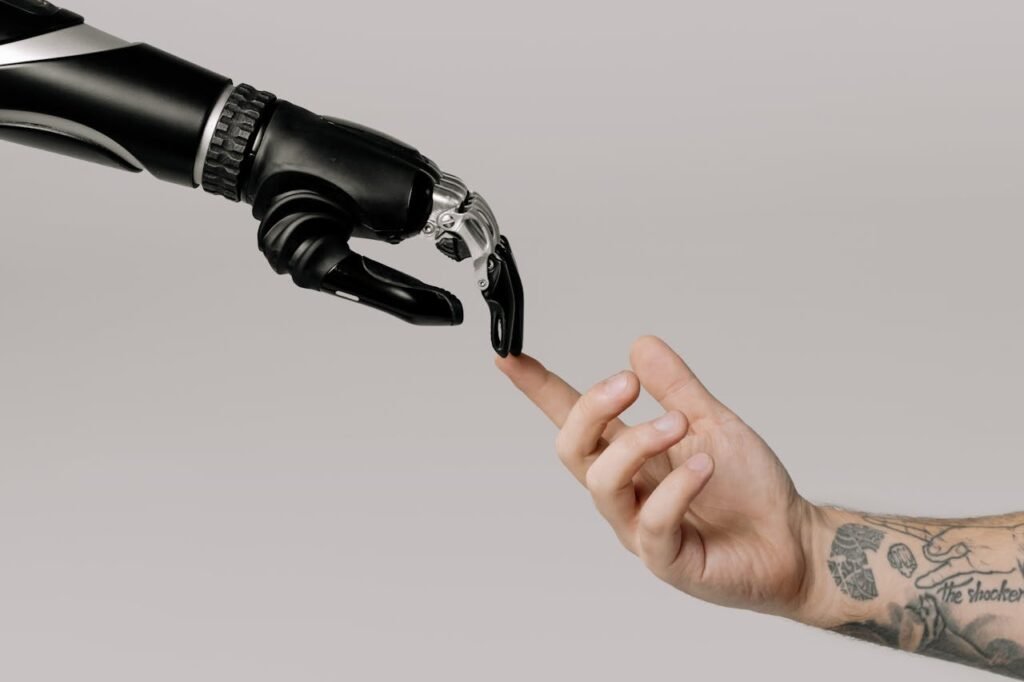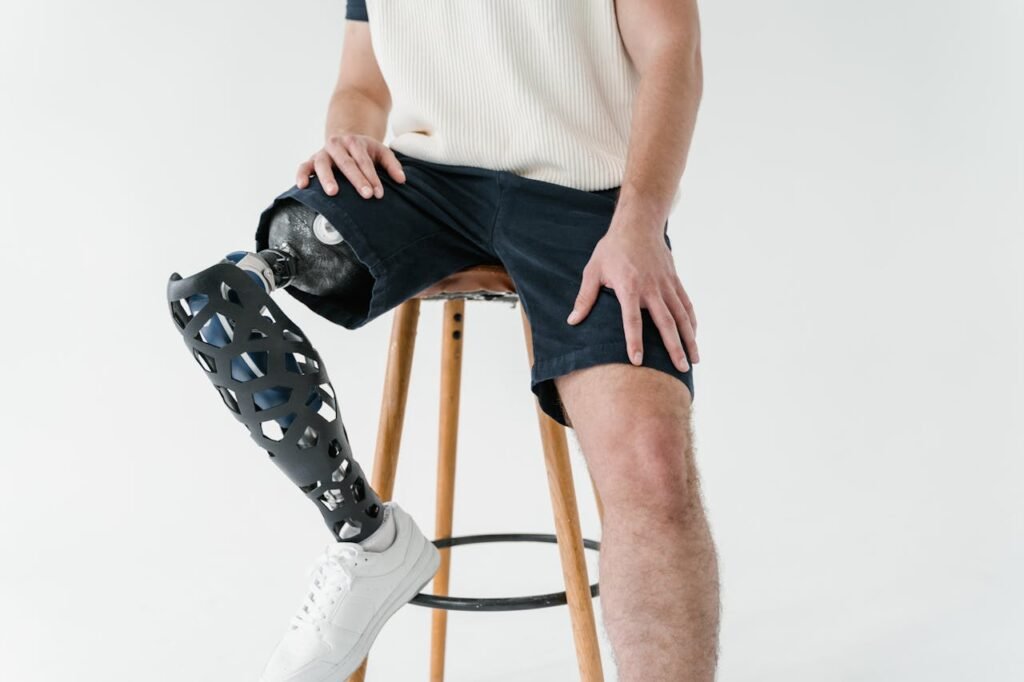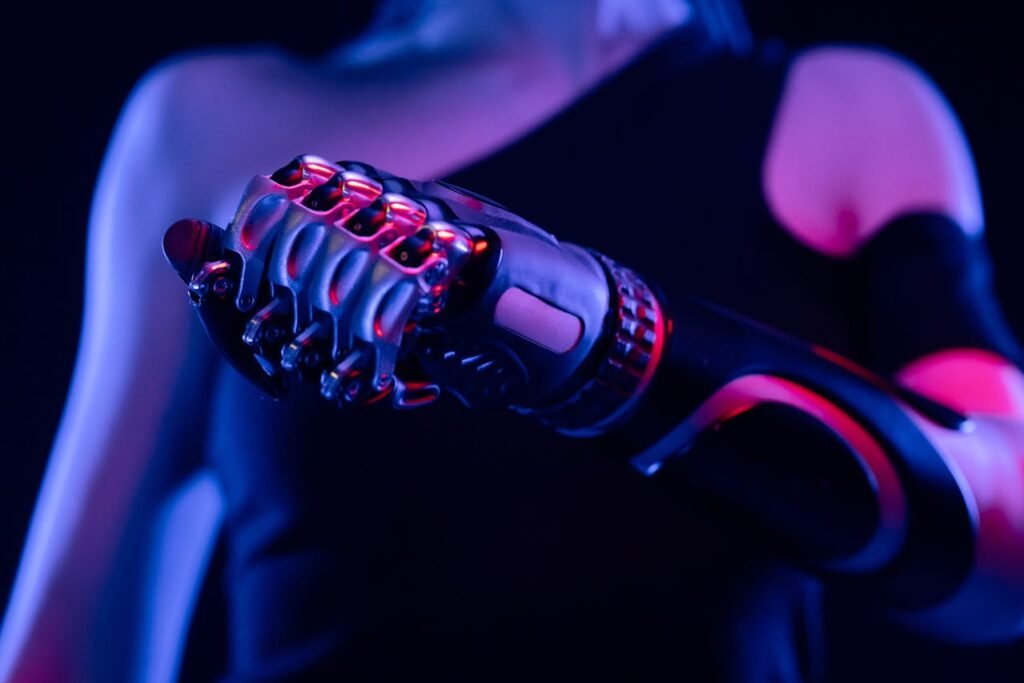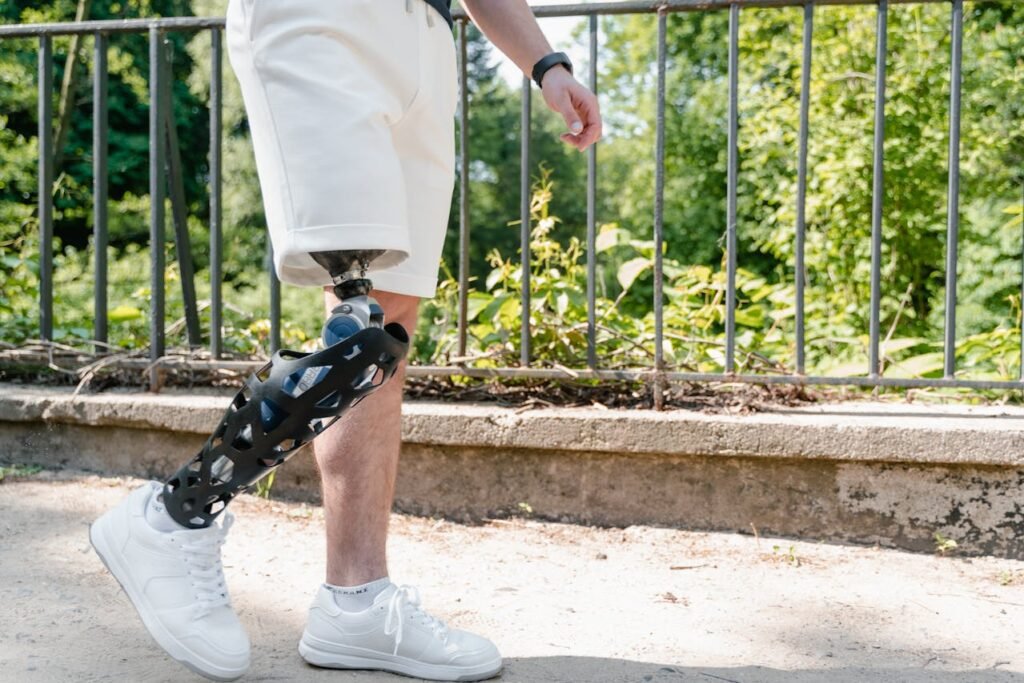Selecting the right prosthetic limb is a deeply personal decision, influenced by your lifestyle, daily activities, and long-term goals. One of the most common questions users face during this process is whether to prioritize lightweight materials or durability in their prosthetic. Both options offer unique advantages, and the best choice depends on a careful assessment of your individual needs.
A lightweight prosthetic can offer greater comfort and ease of use, while a durable prosthetic ensures reliability and long-term performance, even under demanding conditions. Striking the right balance between these factors is key to maximizing functionality and satisfaction.
Understanding Lightweight Prosthetics
Lightweight prosthetics are designed to reduce the strain on the user, making them ideal for individuals who prioritize comfort and mobility. These devices are typically made from advanced materials such as carbon fiber, titanium, or lightweight composites, which combine strength with minimal weight.
The Benefits of Lightweight Prosthetics
A primary advantage of lightweight prosthetics is their ease of use. By minimizing the weight of the device, users can perform tasks more efficiently and with less fatigue. For example, individuals who rely on upper-limb prosthetics often find it easier to lift, carry, or manipulate objects when the device is lighter.

For lower-limb prosthetics, lightweight designs contribute to a more natural gait and improved balance, particularly for those who are highly active or walk long distances. The reduced weight places less strain on the residual limb, joints, and muscles, enhancing overall comfort during prolonged use.
Additionally, lightweight materials are often more aesthetically appealing, allowing for sleeker and more streamlined designs. This can boost user confidence and make the prosthetic feel less intrusive in daily life.
Challenges to Consider
While lightweight prosthetics offer many advantages, they may not always be the best choice for users who require high durability. For example, individuals engaged in physically demanding activities, such as manual labor or extreme sports, may find that lightweight materials are more prone to wear and tear.
Moreover, some lightweight designs may sacrifice certain features to achieve their reduced weight. This can include limitations in load-bearing capacity or fewer customization options. Understanding these trade-offs is essential for making an informed decision.
Designing for Functionality and Comfort
A key strength of lightweight prosthetics is their ability to reduce fatigue, particularly during prolonged use. This makes them an ideal choice for users who engage in daily activities that require frequent movement or repetitive tasks.
For example, individuals who rely on upper-limb prosthetics often appreciate the reduced effort required to lift and manipulate objects, while those with lower-limb prosthetics benefit from a more natural gait and less strain on their joints.
For businesses, it is essential to design lightweight prosthetics that balance reduced weight with robust functionality. This includes incorporating features such as energy-efficient joints, adaptive components, and ergonomic shapes that enhance user comfort.
,ikiBy focusing on these aspects, companies can create prosthetics that cater to both active and sedentary users.
Leveraging Advanced Materials
The choice of materials plays a critical role in achieving the lightweight characteristics users seek. Carbon fiber, for instance, is not only lightweight but also offers exceptional strength and flexibility, making it a popular choice for both upper- and lower-limb prosthetics.
Titanium, another widely used material, combines lightness with corrosion resistance, ensuring durability even in challenging environments.
For businesses, investing in research and development to explore new lightweight materials can provide a competitive edge. For instance, emerging materials like graphene composites and high-strength polymers offer the potential for even lighter designs with enhanced durability.
Incorporating these innovations into product lines positions businesses as leaders in cutting-edge prosthetic technology.

Exploring Durable Prosthetics
Durable prosthetics prioritize strength and longevity, making them suitable for users who engage in rigorous activities or require a device that can withstand challenging conditions. These prosthetics are often constructed from robust materials such as stainless steel, high-strength polymers, or reinforced composites.
The Benefits of Durable Prosthetics
Durability is a critical factor for users who depend on their prosthetic limb to handle heavy loads, repetitive motions, or exposure to harsh environments. A durable prosthetic can provide peace of mind, knowing that the device will perform reliably over time without frequent repairs or replacements.
For example, a durable lower-limb prosthetic with reinforced joints may be ideal for individuals who work in physically demanding jobs or participate in high-impact sports. Similarly, an upper-limb prosthetic with heavy-duty components can handle tasks such as lifting tools or operating machinery with ease.
Durable prosthetics are also well-suited to outdoor enthusiasts who face varying terrain, weather conditions, or physical challenges. Their resilience ensures consistent performance, even in extreme or unpredictable situations.
Challenges to Consider
The primary trade-off of durable prosthetics is their weight. Heavier materials can increase fatigue, particularly during extended use or for individuals with limited strength. This may affect the user’s comfort and willingness to wear the prosthetic for long periods.
Additionally, durable prosthetics may be bulkier in design, which can impact aesthetics and ease of movement. Users who prioritize discreet or visually appealing devices may find these prosthetics less appealing.
Comparing Lightweight and Durable Prosthetics
Choosing between lightweight and durable prosthetics involves evaluating how each type aligns with your lifestyle, priorities, and goals. To make an informed decision, it’s essential to consider the specific advantages and trade-offs of each option and how they apply to your unique circumstances.
Matching Prosthetic Features to Your Daily Activities
Your daily routine and the activities you engage in play a significant role in determining whether a lightweight or durable prosthetic is best for you.
For instance, individuals who perform repetitive or strenuous tasks, such as lifting heavy objects or working in outdoor environments, may benefit from the robustness of a durable prosthetic.

These prosthetics are designed to withstand wear and tear, ensuring they remain reliable even under constant stress.
On the other hand, if your daily activities involve frequent movement, walking long distances, or performing delicate tasks, a lightweight prosthetic may be more suitable.
The reduced weight minimizes fatigue and makes the prosthetic easier to maneuver, which is particularly beneficial for upper-limb users who require precise control.
Considering Physical Factors
The physical condition of your residual limb and overall body strength also influence the decision between lightweight and durable prosthetics.
Lightweight devices can reduce the strain on your residual limb, joints, and muscles, making them a practical choice for individuals who experience discomfort or sensitivity.
However, for users with strong musculature or those accustomed to heavier loads, a durable prosthetic may not present significant challenges in terms of weight. In such cases, the added strength and longevity of a durable device may outweigh concerns about its heaviness.
Your prosthetist can help assess your physical condition and recommend a prosthetic type that complements your body’s needs while maximizing comfort and functionality.
Weighing Aesthetic Preferences
Aesthetic considerations often play a role in prosthetic selection, particularly for users who value discreet or stylish designs. Lightweight prosthetics typically have a sleeker appearance, as their materials allow for slim, streamlined construction.
This can make them less noticeable and more comfortable for individuals who prioritize appearance.
Durable prosthetics, while sometimes bulkier, can also be customized to meet aesthetic preferences. Reinforced materials can be incorporated into modern designs that balance strength with visual appeal.
Discussing customization options with your prosthetist ensures that your prosthetic reflects your personality and lifestyle, regardless of its weight or durability.
Hybrid Solutions: Finding a Balance
In some cases, users may find that a hybrid approach offers the best of both worlds. Advances in prosthetic technology have made it possible to combine lightweight and durable materials, creating devices that provide strength without compromising comfort.
Combining Materials for Optimal Performance
Modern prosthetic design often incorporates multiple materials to achieve a balance of weight and durability.
For example, a lower-limb prosthetic may feature a lightweight carbon-fiber frame paired with reinforced joints made from stainless steel or high-strength polymers. This combination allows for easy movement while maintaining resilience against wear and impact.
Similarly, upper-limb prosthetics can be designed with lightweight components for the hand and wrist while using sturdier materials for load-bearing parts such as the elbow joint. These hybrid designs offer a tailored solution for users who require both mobility and strength.

Modular Designs for Versatility
Modular prosthetics are another innovative solution for users seeking flexibility. These devices allow for interchangeable components, enabling users to adapt their prosthetic to different activities or conditions.
For example, a user might switch between a lightweight attachment for everyday use and a durable attachment for tasks requiring heavy lifting.
This versatility ensures that the prosthetic meets the user’s needs across a range of scenarios, providing greater satisfaction and usability. Businesses that offer modular designs can cater to a wider audience, addressing diverse requirements without compromising on quality.
Making the Right Choice: Consulting with Your Prosthetist
The decision between lightweight and durable prosthetics is highly individual, and consulting with a prosthetist is essential for navigating the options. A skilled prosthetist will assess your needs, lifestyle, and physical condition, offering personalized recommendations that guide you toward the best choice.
Factors to Discuss with Your Prosthetist
During your consultation, be open about your daily activities, long-term goals, and any concerns you may have about comfort, aesthetics, or performance. This information allows your prosthetist to tailor their advice and ensure the prosthetic meets your expectations.
For example, if you’re unsure about whether a lightweight prosthetic can handle the demands of your job or hobby, your prosthetist can suggest specific models or features that balance weight and durability.
They can also explain how advanced materials and technologies can enhance your experience, helping you make an informed decision.
Beyond the Basics: Long-Term Considerations
Choosing between lightweight and durable prosthetics is not just about addressing your immediate needs; it’s also about planning for the future. Prosthetic technology, lifestyle changes, and your physical condition can evolve over time, making it important to think long-term when making your decision.
Adapting to Changes in Your Lifestyle
Your activities and priorities may shift over the years, requiring your prosthetic to adapt to new challenges. For example, you might take on a physically demanding job, start participating in new hobbies, or experience changes in your mobility.
A durable prosthetic offers the reliability to handle these transitions, while a lightweight prosthetic provides the flexibility to support increased activity levels or delicate tasks. Discussing potential lifestyle changes with your prosthetist helps ensure your prosthetic choice aligns with your evolving needs.
Some users may also benefit from upgrading or modifying their prosthetic over time. For instance, a lightweight device can be enhanced with more durable components as the user’s demands increase, or a durable prosthetic can be refined to improve comfort and reduce weight.
Incorporating Technological Advancements
Prosthetic technology is advancing rapidly, with innovations in materials, design, and functionality offering new possibilities for users. Whether you prioritize lightweight or durable features, staying informed about these advancements allows you to take advantage of upgrades that enhance your experience.
For example, new materials like graphene composites are being developed to provide exceptional strength at a fraction of the weight. Similarly, advanced sensors and microprocessors are improving the performance of both lightweight and durable prosthetics, offering users greater control and adaptability.
By choosing a prosthetic from a provider committed to innovation and long-term support, you can ensure your device remains relevant and effective as technology evolves.
Factoring in Maintenance and Longevity
The maintenance and longevity of a prosthetic are closely tied to its materials and design. Durable prosthetics may require fewer repairs but could involve more significant servicing when issues arise due to their complex construction.
Lightweight prosthetics, while easier to manage in some cases, may need more frequent maintenance to address wear and tear.
Discussing these aspects with your prosthetist ensures you’re prepared for the practical realities of caring for your prosthetic. For example, they might recommend regular check-ups, specific cleaning routines, or strategies for prolonging the lifespan of your device.
Businesses that provide clear maintenance guidelines and accessible support services empower users to make the most of their prosthetic investment.

Bridging the Gap Between Lightweight and Durable
For many users, the decision between lightweight and durable prosthetics doesn’t have to be an either-or choice. Modern design approaches and hybrid solutions allow for a balanced approach, combining the best elements of both.
Custom Solutions for Individual Needs
Prosthetists can work with users to create custom prosthetic designs that address their unique requirements. For example, a custom lower-limb prosthetic might feature a lightweight frame for ease of movement, paired with a durable foot component for stability on uneven terrain.
This level of customization ensures that the prosthetic aligns with the user’s specific activities and goals, providing optimal performance without compromising on comfort or reliability. Businesses that offer tailored solutions demonstrate their commitment to user satisfaction and innovation.
Modular Prosthetics for Greater Flexibility
As mentioned earlier, modular prosthetics are a game-changer for users who require versatility. These systems allow users to swap out components or make adjustments based on their activities, effectively bridging the gap between lightweight and durable needs.
For example, a modular prosthetic arm might include a lightweight attachment for typing and a robust, reinforced attachment for heavy lifting. This flexibility provides users with the confidence to tackle any situation, knowing their prosthetic can adapt to their demands.
Making the Final Decision
The choice between lightweight and durable prosthetics ultimately comes down to your personal priorities, lifestyle, and goals. By understanding the strengths and challenges of each option, consulting with your prosthetist, and considering long-term factors, you can make a decision that empowers you to live life to the fullest.
Whether you opt for the comfort and mobility of a lightweight design, the reliability and resilience of a durable prosthetic, or a hybrid solution that combines both, the right choice will provide you with the confidence and independence to achieve your goals.
Understanding User Priorities
The foundation of the decision lies in identifying what matters most to the user. For some, comfort and reduced fatigue may be the highest priority, driving them toward lightweight prosthetics.
For others, reliability and robustness in high-stress environments are non-negotiable, making durable options the better fit. Businesses can provide value by offering tools and consultations that help users articulate their needs clearly.
For instance, a detailed needs-assessment questionnaire, provided during the initial consultation, can guide users in reflecting on their daily routines and potential future challenges.
These insights help prosthetists recommend products tailored to each individual’s unique lifestyle.

Personalizing the Decision-Making Process
Personalization is key to user satisfaction. Prosthetic manufacturers and clinics should focus on creating solutions that address specific user preferences, whether by combining materials, offering modular systems, or integrating advanced features.
A personalized approach not only improves the user’s experience but also fosters a sense of ownership and confidence in their prosthetic.
For example, if a user requires both lightweight mobility for everyday activities and enhanced durability for occasional high-impact tasks, hybrid solutions or interchangeable components can bridge the gap.
Businesses that proactively design and market these options position themselves as leaders in innovation and user care.
Educating Users About the Trade-Offs
Empowering users to make informed decisions requires transparency about the trade-offs involved in choosing between lightweight and durable prosthetics. While lightweight materials minimize physical strain, they may require more frequent maintenance or replacement.
Similarly, while durable designs excel in reliability, they can be heavier and may pose challenges in certain scenarios.
Businesses can leverage educational content, such as videos, infographics, or live demonstrations, to communicate these trade-offs effectively.
For example, a side-by-side comparison of how lightweight and durable prosthetics perform under various conditions can help users visualize the differences and align their expectations with reality.
Collaborating with Prosthetists
The prosthetist’s role is central to ensuring the user makes a confident, well-informed decision. Businesses can strengthen this collaboration by providing prosthetists with comprehensive training, access to cutting-edge products, and resources for addressing user concerns.
When prosthetists are equipped with the right tools and knowledge, they can guide users more effectively through the selection process.
In practice, this might involve prosthetists offering trial periods, during which users can experience the benefits and limitations of both lightweight and durable prosthetics.’
Trial periods allow users to test real-world scenarios, such as navigating stairs, performing repetitive tasks, or walking on uneven terrain, ensuring the final choice aligns with their needs.

Conclusion
Choosing between lightweight and durable prosthetics is a significant decision, one that shapes your mobility, comfort, and overall experience. Both options have their merits, and the ideal choice depends on a careful evaluation of your needs, activities, and future aspirations.
For users, consulting with an experienced prosthetist and considering advanced technologies, modular designs, and long-term adaptability ensures you make a decision that aligns with your unique circumstances. For businesses, prioritizing user-centered design, offering hybrid solutions, and staying at the forefront of innovation positions you as a leader in the prosthetics industry.
Ultimately, whether you prioritize lightness, durability, or a combination of both, the right prosthetic can transform challenges into opportunities, empowering you to embrace life with confidence and purpose.



